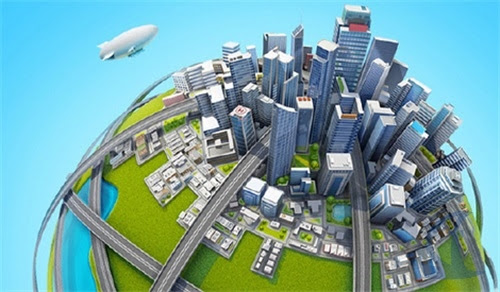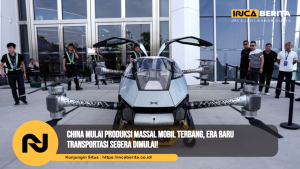Global Infrastructure Projects: Key GIP Changing the World

(Photo: en.people.cn)
Global Infrastructure Projects has always been a crucial part of human development. It’s what keeps cities running smoothly, connects people across distances, and enables economies to thrive. Over the years, we’ve witnessed the construction of roads, bridges, dams, and buildings that have changed the landscape of the world.
But today, we’re seeing infrastructure projects on an entirely different scale—projects that go beyond just physical structures to focus on sustainability, innovation, and global connectivity. I remember when I first learned about some of the megaprojects being planned across the globe, and I couldn’t help but think about how these developments would change the way we live for generations to come.
In this article, I’ll explore some of the most significant global infrastructure projects that are transforming the world. From cutting-edge transportation networks to smart cities, these initiatives are pushing the boundaries of what we thought was possible.
The Belt and Road Initiative: Connecting Asia, Africa, and Europe

China’s Ambitious Global Infrastructure Plan
One of the most significant global infrastructure projects in recent years is China’s Belt and Road Initiative (BRI), which seeks to improve connectivity between Asia, Africa, and Europe. The BRI is essentially a vast network of trade routes, including railways, roads, ports, and pipelines, designed to facilitate the movement of goods and people across these regions.
When I first read about the Belt and Road Initiative, I was struck by the sheer scale of the project. It involves investments in infrastructure worth trillions of dollars, spanning more than 60 countries. The goal is to create a modern Silk Road, reminiscent of the ancient trade routes that connected the East and West, but with 21st-century technology and design.
The BRI’s impact is already being felt in several countries, as new transportation corridors are creating more efficient trade routes. For example, the China-Pakistan Economic Corridor (CPEC) is bringing much-needed infrastructure investment to Pakistan, while the East African Railways project is revolutionizing transportation in East Africa. This initiative promises to reshape global trade, boost economic growth, and foster greater cooperation between countries.
The Grand Ethiopian Renaissance Dam: Powering Africa’s Future
A Game-Changer for Energy and Water Resources in Africa
In Africa, one of the most ambitious infrastructure projects underway is the Grand Ethiopian Renaissance Dam (GERD) on the Blue Nile River. This dam, once completed, will be the largest hydroelectric power plant in Africa, with a capacity of over 6,000 megawatts.
What makes GERD so important is that it promises to transform the region’s energy landscape. For Ethiopia, it will provide a reliable source of electricity to fuel industrial growth and improve living standards. For neighboring countries, it offers the potential for increased water access, agriculture, and hydroelectric power.
However, as with any large infrastructure project, there have been challenges—particularly surrounding water rights and regional cooperation. Ethiopia, Sudan, and Egypt have had ongoing negotiations regarding the management of the Nile River’s water resources. Despite the challenges, the GERD stands as a beacon of progress and a model for how large-scale infrastructure can drive development in the region.
The Hyperloop: The Future of High-Speed Travel
Revolutionizing Transportation with Cutting-Edge Technology
When it comes to global infrastructure projects, few are as futuristic as Elon Musk’s Hyperloop. This high-speed transportation system, designed to transport passengers in pods traveling through low-pressure tubes, promises to reduce travel times between major cities to a fraction of what it takes today.
While still in development, the Hyperloop is an ambitious attempt to revolutionize transportation. The idea is that these ultra-fast pods could travel at speeds of up to 760 miles per hour, drastically reducing travel times between cities like Los Angeles and San Francisco. I was intrigued by the concept when I first heard about it—the idea that you could go from one city to another in under 30 minutes feels like something out of a sci-fi movie, but with advancements in technology, it’s becoming more feasible.
The first pilot projects for the Hyperloop are underway in places like California and Dubai, where companies like Virgin Hyperloop are testing prototypes. If successful, the Hyperloop could not only transform transportation but also open up new possibilities for regional development, economic integration, and environmental sustainability.
Smart Cities: Sustainable Urban Development for the Future
Designing Cities for the Next Generation
As the world’s population continues to grow, urban areas are under immense pressure to accommodate more people while reducing their environmental impact. One of the most innovative responses to this challenge is the development of smart cities, which use technology to create sustainable, efficient, and livable urban environments.
In places like Singapore, Songdo (South Korea), and Masdar City (UAE), we’re seeing the rise of cities that integrate advanced technology to manage everything from traffic and waste to energy consumption and water usage. These cities are designed with the future in mind, focusing on sustainability and making the most of digital infrastructure.
For example, Singapore’s Smart Nation Initiative is using data, sensors, and digital systems to create a more efficient city. From smart traffic lights to sensors that monitor air quality, the city is making life easier for residents while reducing its environmental footprint. I’ve seen firsthand how smart technologies can change the way cities operate, from enhancing mobility to improving public services.
The Panama Canal Expansion: Redefining Global Trade
Enhancing Global Shipping and Trade Routes
Another iconic global infrastructure project that has had a massive impact is the expansion of the Panama Canal. This expansion, completed in 2016, added a new set of locks to accommodate larger ships, known as Panamax vessels, that can now travel between the Atlantic and Pacific Oceans more efficiently.
The Panama Canal is one of the most important trade routes in the world, connecting the Pacific and Atlantic Oceans. With the expansion, global trade has become even more streamlined. This has allowed for more cargo to pass through the canal, reducing shipping costs and travel times for businesses around the world.
For countries dependent on international trade, the expanded canal is a game-changer. It opens up new opportunities for markets in the Americas, Europe, and Asia to connect more efficiently, boosting global commerce and strengthening economic ties.
The California High-Speed Rail: Connecting Major Cities with Green Transportation
Creating a Sustainable Transportation Network
The California High-Speed Rail is another major infrastructure project that promises to change how we think about transportation. The project aims to connect cities like San Francisco and Los Angeles with a high-speed rail system that will offer a sustainable and efficient alternative to flying and driving.
When completed, the California High-Speed Rail will reduce travel time between these two major cities from over 6 hours to just 2.5 hours, all while reducing carbon emissions and congestion.
I’ve always believed that transportation infrastructure needs to evolve to meet the demands of climate change and population growth. The California High-Speed Rail is an important step in that direction, and if successful, it could serve as a model for other countries looking to create sustainable, high-speed transportation networks.
Conclusion: Infrastructure Projects Shaping the Future
From connecting continents with high-speed trains and revolutionary transportation technologies to powering economies with new dams and renewable energy systems, global infrastructure projects are playing a pivotal role in shaping the world’s future. These projects are not just about building roads, bridges, or skyscrapers; they’re about creating a more connected, sustainable, and efficient world.
As I reflect on the infrastructure projects that have already transformed our world and the ones still in development, I’m reminded of how deeply interconnected global progress truly is. These projects have the potential to bring people closer together, create new opportunities, and tackle some of the biggest challenges of our time—whether it’s climate change, economic inequality, or urbanization.
With such ambitious projects on the horizon, the future looks brighter, and the world more connected than ever before. The global infrastructure revolution is underway, and it’s a thrilling time to witness how these changes will unfold.
Stay Informed: The Latest Trends in International Business
In today’s globalized world, staying updated on international business news is crucial for understanding market dynamics, trade policies, and global economic trends. International Business News covers the most recent developments in the world of business, from cross-border mergers and acquisitions to emerging markets and shifting economic policies. Whether you’re a business professional, investor, or simply interested in global affairs, this article provides timely and insightful coverage of international business events that shape our world.






